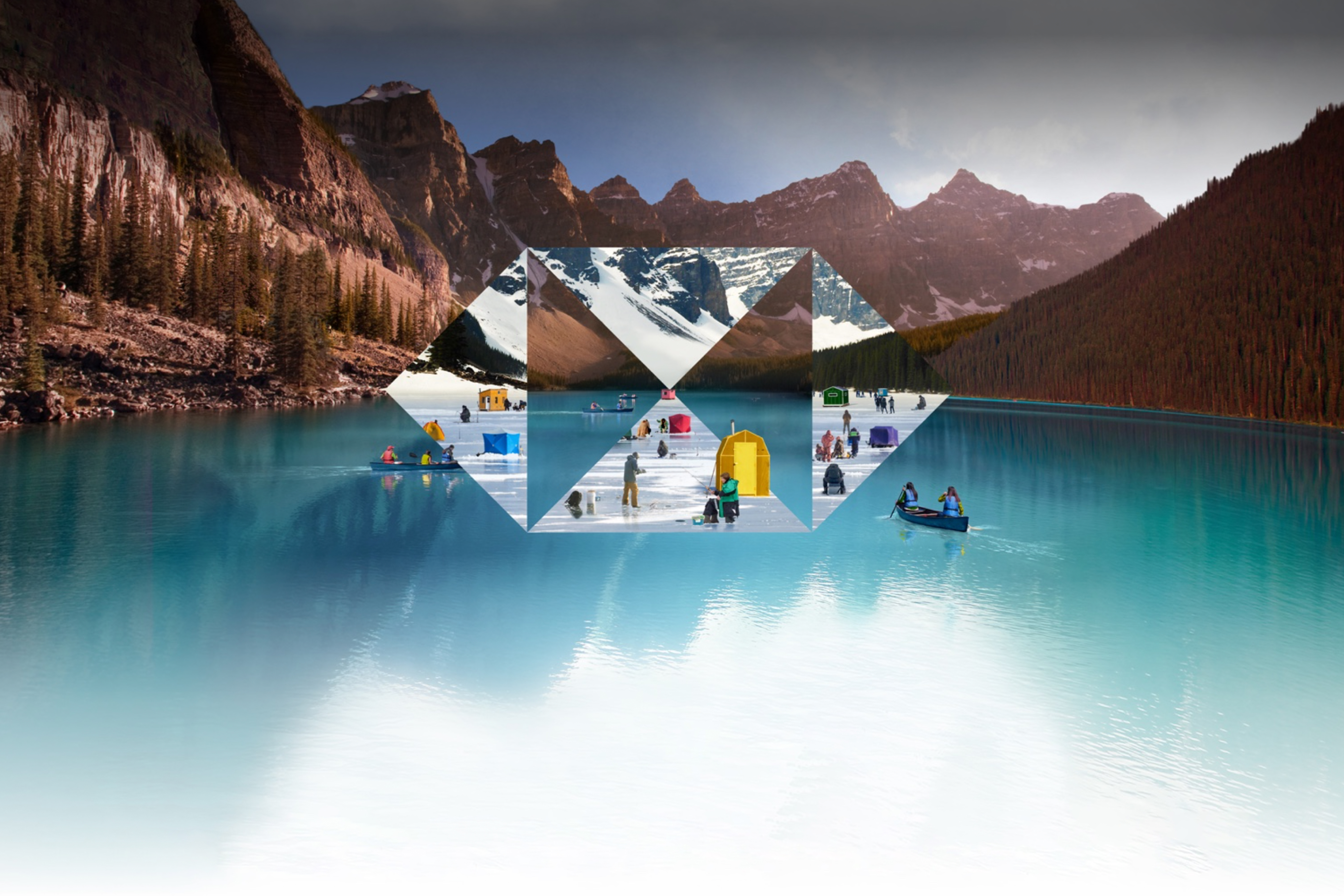What was behind the decision to undertake the create.hsbc project?
Prior to 2018, HSBC had a complex and varied range of brands and brand management systems. They were used by internal and external brand, marketing, digital and design teams to serve customers across +60 markets and four business lines. HSBC’s brand fragmentation challenge was an unintended consequence of a growing global organisation with legacy systems and traditional ways of working. Executive leadership recognised these challenges and encouraged more collaboration across teams as a strategic priority and opportunity for a competitive advantage.
The disparate nature meant there was no clear, single source of truth for the brand and design standards. It reflected an organisation that struggled to unite their global creative community behind one unified brand and set of common guidelines that served above-the-line and below-the-line across services and markets.
In 2018 HSBC underwent a major global brand refresh. The branding exercise streamlined and simplified HSBC’s brand and made it fit for the modern age. The creative exercise was the easy part. Rolling out the refreshed brand consistently and efficiently across our vast global estate was the long and hard part. It required creating an integrated brand and design system to serve:
- +60 markets with dozens of languages and cultures
- Hundreds of apps and websites
- Thousands of branches
- Thousands of ATMs
- Dozens of corporate offices
- Hundreds of services
- Millions of pieces of collateral and cards
- Thousands of annual events
- Dozens of partnership programmes
- 40 Mn customers
- 250,000 employees
It became apparent that a totally new, simple, unified user-centric platform was needed for the global creative community. The platform would help our creative community serve the diverse and unique needs of customers worldwide.
At this point our internal and external creative teams used a complex range of file-sharing tools and asset management systems. Most were firewalled preventing our agencies and partners from accessing essential creative materials. This fragmentation meant there was no clear source of truth for our brand and design standards.
HSBC also lacked a communication platform to share news, creative updates and inspiration to its broad creative community. Instead, our global community of more than 60,000 were emailed and often forwarded the latest updates on PDF documents with links to platforms that they may not even have access to.
Taking brand and design guidelines from static and siloed documents to dynamic and interactive experiences was the ambition and would break new ground.
Did you have any resistance getting the project going?
Everyone knew that there was a better way, but no one knew what it was or what it needed to be, or even whose job it was. Various groups hired agencies and consultants to solve their problems, but this created new and different fragmentation problems. Ironically the global solution was developed by the digital design team that foresaw the exponential growth in governance that would be needed to support HSBC’s digital transformation. The heads of digital design, who governed HSBC’s digital experiences, were seeing common problems and were ultimately treating symptoms, not the problem. The problem was there was no clear source of truth so everything that was being produced was effectively wrong to a degree and being perpetuated.
It required going up stream and working with the brand team to fix the problem. At that point there were many creative industries around the bank trying to operate like siloed start-ups. They were creating new design languages, new sub-brands, new design systems, new code libraries on a range of new platforms with no centring point or view of the holistic customer or brand experience. Arguably many creative teams were inadvertently creating fragmentation while the brand and design standards teams were focussing on consolidation.
Generating support and alignment across the bank to the global brand and design system took dozens of meetings, presentations, workshops and executive pitches over many months. Fortunately, HSBC’s Group Marketing leadership recognised the challenges and saw the value this new approach could produce. Early support from leadership made progress much easier.
What were your main pitch points to get the budget/resource approved?
We presented a clear and attractive strategy that would help creative teams execute against various C-Suite objectives, namely:
- Streamlining and modernising our brand
- Digitising at scale
- Increasing brand value
- Driving customer satisfaction
- Achieving business objectives
- Accelerating delivery to market
- Connecting our global community
- Building culture, and
- Reducing costs
Where did you start the process?
Following our brand and design system refresh in early 2018, it became apparent that a single platform for our brand and design standards was required – a new, unified platform that would allow users to easily access our brand and design foundations. It would enable our entire creative community to create truly unique and distinctive HSBC experiences at scale from a common starting point.
A multi-disciplinary team – drawing upon internal brand, digital and marketing departments, as well as external agencies and technology advisers – spent almost a year researching, defining and mapping user journeys, before designing, building and testing a bespoke new user-centric home for our brand and design system.
We applied our brand’s customer-experience principles and filtered our decision-making processes through an exhaustive industry-benchmarking review. The team also gathered direct feedback from almost 150 interviews across our global creative community and identified jobs they had to do, barriers and pain-points that could be solved.
The ambition of this process was to create ‘the beating heart of HSBC’s brand’, a creative platform that would live and breathe our values. The brand and design system would connect with and inspire our global community. It would unify our fragmented creative services to turn:
- Siloed knowledge repositories into a brand showcase
- Multiple websites into a single platform
- Libraries into a utility
- Static content into dynamic experiences
- One directional communication into two directional conversations
create.hsbc was born to house our creative assets, guidelines and toolkits. It also acts as a catalyst to break down a siloed and PDF-first culture — PDFs can become dangerously outdated and never reigned in once released. It was designed to enable creative community engagement, drive inspiration, foster collaboration, share best practices and more.
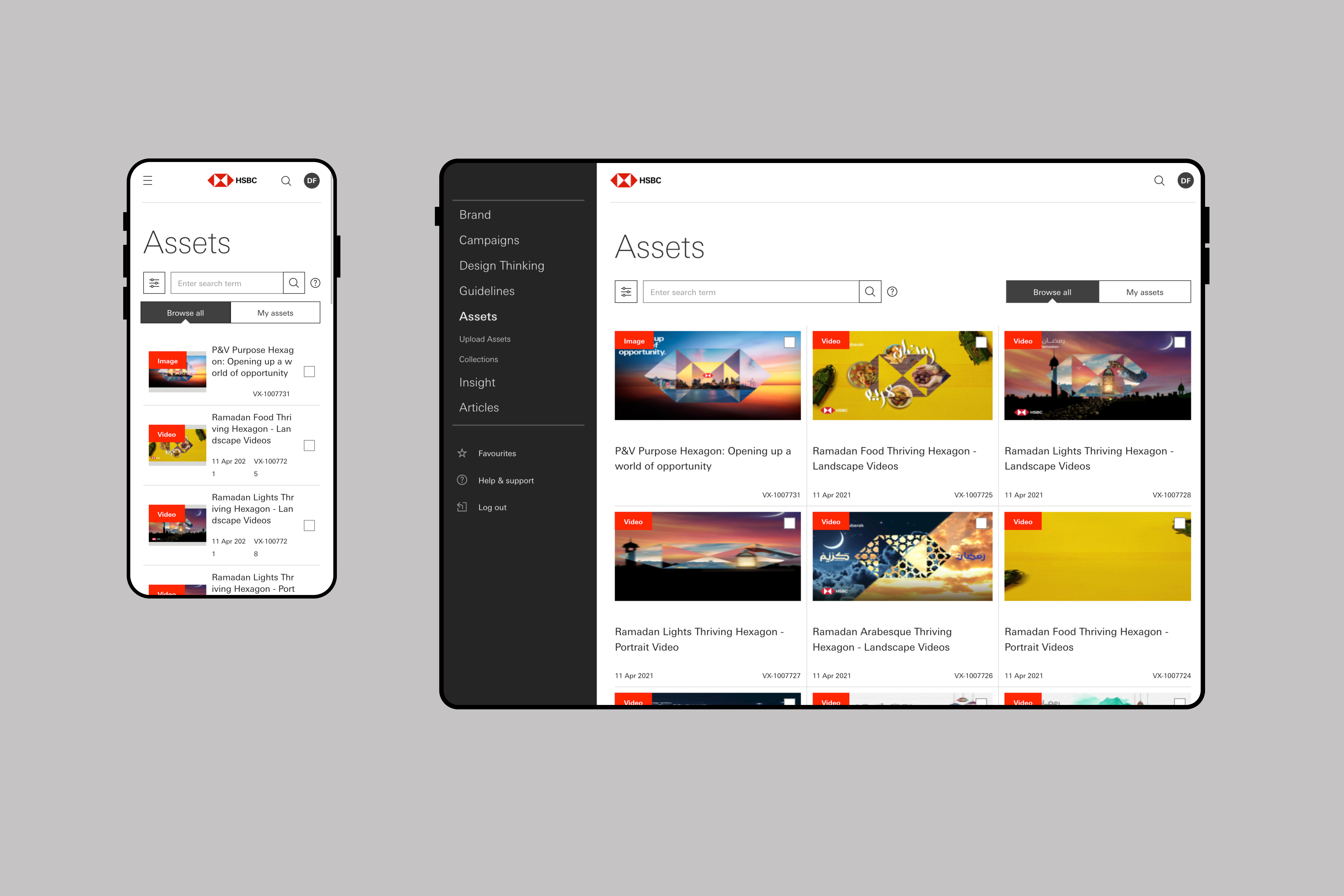
We wanted create.hsbc to be a transformational force within the world’s leading international bank, both creatively and culturally. One that’s orientated around driving stronger customer experiences in agile ways, as well as living up to our brand values.
Brand, design, user experience (UX) and content were the core pillars on which create.hsbc was built. These relate directly to our user and business goals. A vision was set by the team for create.hsbc to “simplify, inspire and accelerate every HSBC customer experience”
- Simplify e.g. Search, navigation, processes, governance
- Inspire e.g. Strategy, thought leadership, showcase, community
- Accelerate e.g. Guidelines, creative toolkits, code libraries, assets
From siloes to community engagement:
Encouraging the community to stop ‘pdf-first’ approach and speeding up publication with a devolved pyramid model was a major win. Teams who previously felt excluded or outside the design community now volunteer and share their content.
The team needed a name for the brand and design system that reflected the ambition and would resonate with our global creative community. The name “create” was chosen; it’s a noun, a verb and call-to-action and describes perfectly what it’s intended to do.
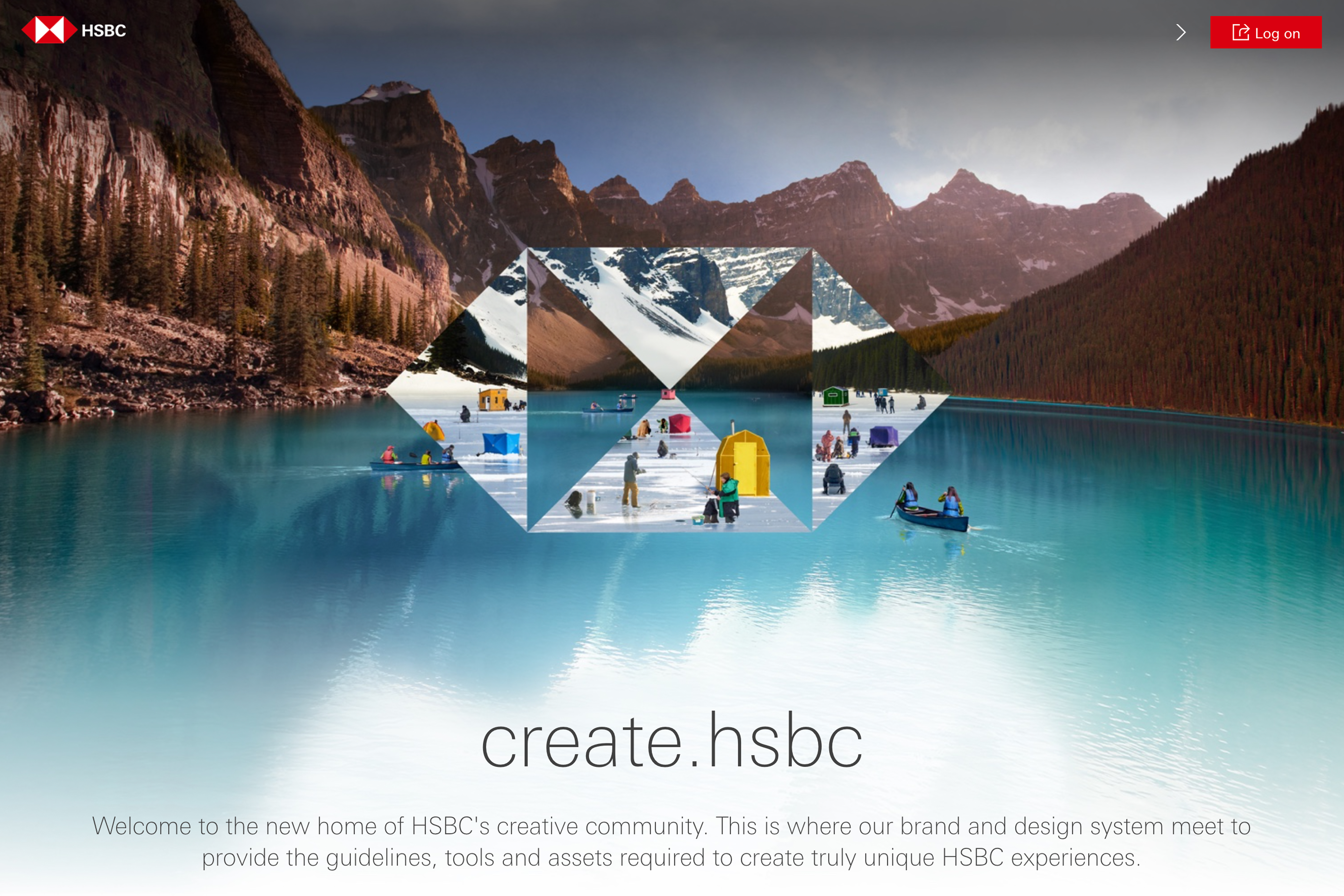
What have the results been so far from create.hsbc?
create.hsbc has performed well beyond expectations. It has surpassed the strategic business objectives and been a uniting force for HSBC’s global creative community. Now the community can connect around our brand and take it wherever our customers need it to be.
- +40 articles published by the community from different functions. This compares with less than 5 articles published over several years before create.hsbc
- +30 new and updated digital standards published
- 6 sub-brand standards published
- COVID-19 response tool:In less than two days, a central hub for HSBC’s COVID brand and marketing strategy was set up. It included all Group-approved brand and communications for the crisis. It was updated daily with contributions from our main markets. It proved to be a best practice showcase and sharing tool across its +60 markets. This adaptability/flexibility for an unforeseen situation would not have been possible without create.hsbc.
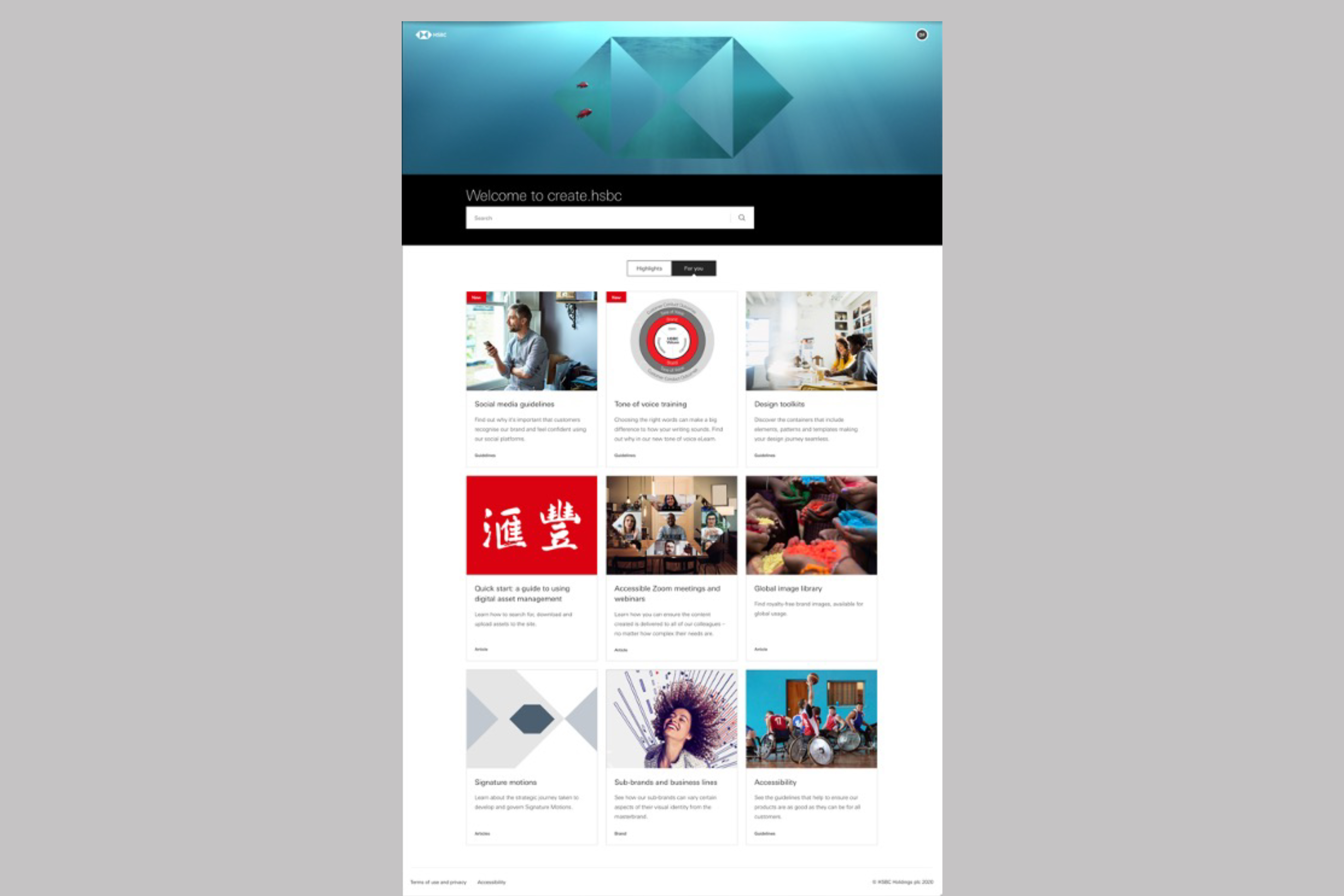
Visitors and views:
- +62,000 unique users
- +31% vs 1-year objective: 62,210 unique visitors vs 15,000 objective
- +533% first 3 months vs previous 3 months in old platform: 32,910 vs 5,203
- +2.1 million page views
- +425,000+ total visits
Repeat visits:
- +249% vs 1-year objective: 195,397 repeat visits vs 56,000 objective
- +260% first 3 months vs previous 3 months in old platform: 30,062 vs 8,354
- +62% Average pages per visit vs 1-year objective: 4.87 average pages/visit versus objective of 3.00
Page visits:
- +139% vs 1-year objective: 1,672,607 page visits vs 700,000 objective
- +429% first 3 months vs previous 3 months in old platform: 299,346 vs 56,638
Year license fee savings: HSBC now saves a massive £350,000 per year on legacy system license fees
Year hosting savings: HSBC now saves over £80,000 per year on hosting, as a result of consolidation on Adobe AMS compared to past systems hosted externally. (SOURCE: Key metrics from 10 December 2019 (launch), to 15 March 2021.)
Awards:
Silver for ‘Best intranet’ – Digital Impact Awards 2020
Silver for ‘Best use of digital from the financial services’ – Digital Impact Awards 2020
Silver for ‘Best use of Technology in Employee Engagement’ – Engage Awards 2021
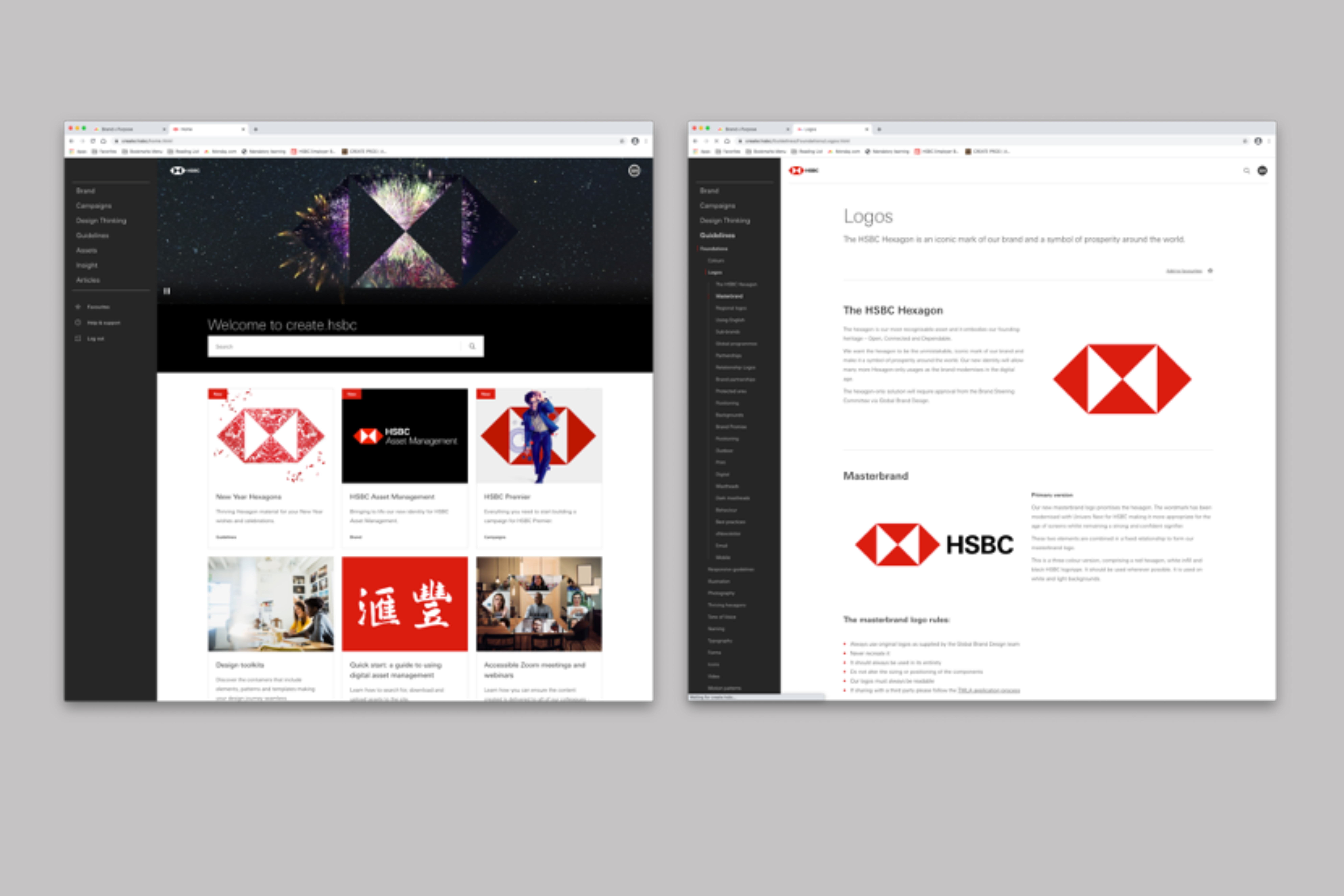
Creative contributions:
The Hexes, HSBC’s annual global internal marketing awards, saw +14% YoY increase in entries – a clear sign that more people are contributing and sharing creative work. The Hexes were previously a small initiative handled over email, but thanks to create.hsbc’s ability to host content and promote creative community engagement and inspiration, there are now hundreds of submissions, and thousands of viewers watch the live presentations globally.
Collaboration and best practice sharing:
The global brand and design team now run monthly conferences for creatives, called create.live. Before create.hsbc, ad hoc events attracted around 50 people. The April 2020 event saw a 240% increase to 170 people, following its promotion as part of the new create.hsbc community ecosystem.
What were the most important things you learnt from the process?
I describe a brand simply as “the intersection between the customer expectations we set and the customer experiences we deliver.” As such a brand isn’t just a creative platform or visual identity that can live in a PDF. It requires a mindset, ways of working, constant nurturing, showcasing, tooling, assets, regular conversations and debates, support, evolution and everything the creative community needs to design and execute to the vision. Without these things a brand will become a subjective interpretation decided by budgets, creative preferences and timelines. Over time these will erode and fragment a brand.
Anyone developing a brand must consider how they will connect their creative community to it and give them everything they need to use it as intended in a live and dynamic way. It can’t be understated how important this is.
User feedback:
“A big call-out to create.hsbc. We never knew how vital this platform would be! I’m so glad we invested in it and that it can flex to this type of situation [COVID-19].” HSBC Executive
“This project is a great example of Agile working…I’m really pleased with what we have created and believe it will be an integral part of helping us to build the HSBC brand with creativity, clarity, consistency and commitment globally.” Former Global Head of Brand, HSBC
“I like the thriving spirit behind create. You inspire me to get better. Keep up the good work.” HSBC Communications Manager
“You are doing an unprecedented effort to change the future of the bank. Great job. Keep going!” HSBC Risk Manager
“It’s a valuable tool for communicating Brand projects and philosophies, as well as providing ‘One Source of Truth’ to help us deliver consistency.” HSBC Brand Design Manager
“create has evolved from an asset library to a repository of brand tools and guidelines that has helped provide clarity, both for us and our creative agencies.” HSBC Campaigns Marketing Manager
Now you have set the bar. What’s next for create.hsbc?
create.hsbc is still evolving and this year our backlog is busier than ever. It will include personalisation, redesigning and rebuilding our Assets section, and re-skinning to reflect our new Purpose, Values and refined brand identity.
Design Thinking drives our backlog which includes:
| Simplify | Inspire | Accelerate |
| • Onboarding • Personalisation • Creative briefings • Brand management • Gated areas • eLearning • Digital accessibility | • Brand re-skin • Brand guidelines • Thought leadership • Showcase and awards • Global content calendar • Live events • Inclusive Design | • Assets section redesign • Image library APIs • Creative production • AI smart search & tagging • AI powered approval’s system • Code libraries |

